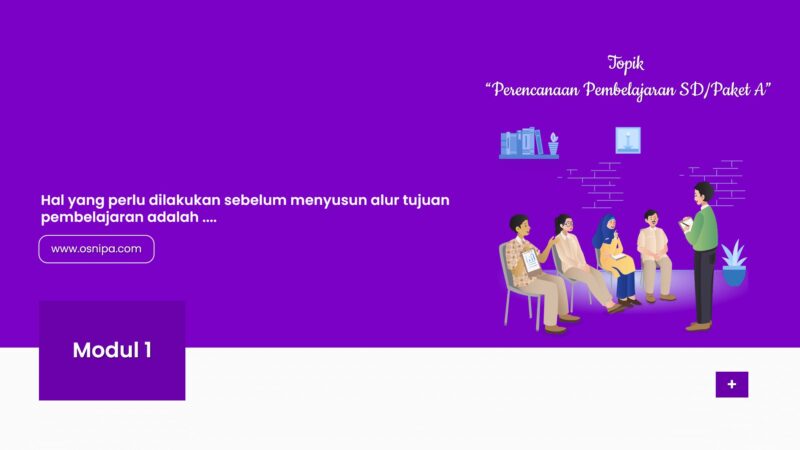Hal Yang Perlu Dilakukan Sebelum Menyusun Alur Tujuan Pembelajaran Adalah Panduan Praktis

Before diving into the intricate task of creating a learning objective framework, one crucial step stands out: understanding your students’ needs. This foundational knowledge helps tailor objectives that resonate and engage effectively.
Hal yang perlu dilakukan sebelum menyusun alur tujuan pembelajaran adalah melakukan analisis mendalam terhadap konteks dan karakteristik siswa. By focusing on specific learning outcomes, you set a clear direction for your teaching strategy.
With a solid grasp of your audience in place, you can confidently move forward in designing meaningful and impactful learning experiences.
Hal yang perlu dilakukan sebelum menyusun alur tujuan pembelajaran adalah
When it comes to creating effective learning pathways, there are crucial steps educators must take before they dive into the nitty-gritty of outlining objectives. Understanding these steps can greatly enhance the quality and effectiveness of learning outcomes. In this section, we will explore various essential actions to consider prior to structuring your learning objectives, ensuring that educators are well-prepared for their teaching endeavors.
Identifying Learning Needs
Before establishing any learning goals, it’s vital to recognize the specific learning needs of your students. This involves assessing where they currently stand and what gaps exist in their knowledge. Here are some effective strategies to identify these needs:
- Conducting Surveys: Use surveys to gather information about students’ prior knowledge and interests. This helps pinpoint areas that need focus.
- Observing Classroom Dynamics: Pay attention to how students interact with the material. Are they struggling with certain concepts or excelling in others?
- Assessing Previous Performance: Review past assessments to identify trends in student performance and understanding.
- Gathering Feedback from Peers: Discuss with fellow educators about their experiences and insights regarding the specific cohort.
By engaging in these activities, you can gather valuable insights that will guide you in establishing realistic and impactful learning objectives.
Establishing Clear Learning Outcomes
Once you’ve assessed the learning needs, the next step is to articulate clear learning outcomes. Outcomes should provide a measurable goal that signifies what learners will achieve by the end of the learning experience. Here’s how to create effective learning outcomes:
Using the SMART Criteria
The SMART criteria stand for Specific, Measurable, Achievable, Relevant, and Time-bound. When you evaluate your goals against these criteria, they become more defined and reachable.
- Specific: Clearly define what the learner will be able to do.
- Measurable: Ensure that there is a way to measure if the outcome has been achieved.
- Achievable: Set goals that are realistically attainable.
- Relevant: Ensure the outcomes align with broader educational goals or standards.
- Time-bound: Set a timeframe for achieving the learning outcome.
By applying the SMART criteria, you can create outcomes that provide clarity and direction.
Aligning with Curriculum Standards
It is important to ensure that your learning objectives align with regional or national curriculum standards. This alignment guarantees that the learners receive education that meets required benchmarks. Consider the following steps:
- Review Curriculum Guidelines: Familiarize yourself with local, state, or national guidelines that outline educational standards.
- Map Objectives to Standards: Create a chart or a matrix to correlate your learning outcomes with specific standards.
- Consult with Other Educators: Collaborate with colleagues to ensure everyone’s learning objectives align with the curriculum.
This process validates that your objectives not only support student learning but also comply with educational regulations.
Choosing Appropriate Teaching Strategies
Once you have a solid understanding of your students’ needs and aligned learning outcomes, it’s time to decide on the teaching strategies that will best facilitate learning. Consider these options:
Different Learning Styles
Understanding that students have different learning preferences is crucial. Incorporate a mix of:
- Visual Aids: Use diagrams, charts, and videos to enhance understanding.
- Hands-On Activities: Engage students with practical tasks related to the subject matter.
- Group Discussions: Foster collaboration through peer discussions and teamwork.
- Technology Integration: Utilize educational tools and platforms to create an interactive learning environment.
By diversifying your teaching methods, you cater to various learning styles, making education more accessible and enjoyable.
Developing Assessments
Assessment is an integral part of the learning process. It allows you to gauge students’ understanding and progress. Before laying out your objectives, think about how you’ll assess your learners. Here are some strategies:
- Formative Assessments: Employ quizzes, discussions, and informal checks during the learning process to track progress.
- Summative Assessments: Design final projects or exams that evaluate students’ comprehension at the course’s end.
- Peer Assessment: Encourage students to assess each other’s work for broader perspectives and collaborative learning.
By outlining how you will assess students from the beginning, you set clear expectations for both instructors and learners.
Creating an Engaging Learning Environment
A positive and inclusive learning environment can significantly impact student engagement and motivation. Here’s what you should consider:
Cultivating a Supportive Atmosphere
Make your classroom a safe space where students feel valued and respected. To create a supportive environment, implement the following:
- Encourage Open Communication: Foster an atmosphere where students feel comfortable sharing their thoughts and questions.
- Recognize Diverse Backgrounds: Acknowledge the diverse backgrounds and experiences of your students.
- Celebrate Achievements: Regularly recognize and celebrate students’ accomplishments, no matter how small.
By cultivating this atmosphere, you increase students’ willingness to participate and engage in the learning process.
Utilizing Resources and Materials
Before forming your learning objectives, consider the resources and materials available to you. Having the right tools can greatly enhance learning outcomes. Here’s how:
- Evaluate Available Resources: Assess textbooks, online resources, and multimedia that can aid in teaching.
- Incorporate Technology: Utilize educational platforms and software that provide interactive learning experiences.
- External Resources: Look for community resources, like museums or local experts, to supplement learning.
These resources can enrich the learning experience and make your objectives more achievable.
Collaborating with Stakeholders
It’s important to engage with stakeholders—students, parents, and fellow educators—when establishing learning goals. Here’s how you can involve them:
- Conduct Parent Meetings: Discuss educational goals and gather input from parents about their children’s needs.
- Involve Students in the Process: Encourage students to contribute to discussions about their learning preferences and goals.
- Collaborate with Peers: Work together with other educators to share best practices and insights.
Involving stakeholders enriches the learning objectives and ensures a shared vision for student success.
Reflecting on Past Experiences
Before you finalize your learning objectives, take a moment to reflect on previous teaching experiences. This reflection can provide valuable insights into what works and what doesn’t. Consider these points:
- What strategies were effective in the past? Identify methods that successfully engaged students and improved learning outcomes.
- Where did students struggle? Pinpoint areas where students had difficulty and think of ways to address those issues.
- Gather Feedback: Seek feedback from students and colleagues on previous lessons and adjust accordingly.
This reflection helps you continuously improve your approach to education.
Setting a Timeline for Implementation
Finally, after gathering all the necessary information and insights, it’s time to set a timeline for implementing your learning objectives. Consider the following:
- Outline Key Milestones: Break down the learning outcomes into key milestones and timelines for assessment.
- Be Flexible: Allow for adjustments in the timeline based on student progress and feedback.
- Communicate the Timeline: Share the timeline with students so they know what to expect and when.
Having a clear implementation timeline helps keep both teachers and students accountable.
In essence, the journey to effectively structuring learning objectives begins long before the actual planning takes place. By identifying learning needs, establishing clear outcomes, aligning with standards, and engaging various stakeholders, educators can create dynamic learning experiences that resonate with their students. Ensuring that assessments, teaching strategies, and resources are well-aligned further enhances the educational process. Through reflection and collaboration, teachers can continuously improve their approaches, paving the way for successful learning outcomes that prepare students for their futures.
CARA MENYUSUN ALUR TUJUAN PEMBELAJARAN ATP PADA KURIKULUM MERDEKA
Frequently Asked Questions
“`html
What preliminary research should educators conduct before developing learning objectives?
Before developing learning objectives, educators should conduct thorough research on the subject matter, the needs of the students, and the educational standards relevant to the curriculum. Familiarizing themselves with existing literature, educational frameworks, and best practices can provide valuable insights. Additionally, understanding students’ prior knowledge and learning styles will help tailor the objectives to their specific needs.
How can educators ensure that their learning objectives are aligned with curriculum standards?
Educators can ensure alignment by carefully reviewing the established curriculum standards and guidelines for their subject area. They should analyze how their learning objectives fit within these standards, making adjustments as necessary to meet both local and national educational requirements. Collaborating with colleagues and using curriculum mapping tools can aid in this alignment process.
What role does student assessment play in crafting learning objectives?
Student assessment plays a crucial role in crafting effective learning objectives. Educators should consider the types of assessments they will use to measure student understanding and progress. Clear learning objectives guide the assessment process, helping educators define what success looks like and how to evaluate it. Using formative assessments can also provide insights into student needs, which can inform the final objectives.
Why is it important to consider students’ backgrounds before creating learning objectives?
Considering students’ backgrounds is vital because it helps educators create relevant and meaningful learning objectives. Understanding the cultural, socio-economic, and linguistic factors that influence students can lead to more effective teaching strategies. Educators can design objectives that resonate with students, thereby increasing engagement and motivation to learn.
How can feedback from previous lessons influence future learning objectives?
Feedback from previous lessons provides educators with insights into what worked well and what did not. By analyzing this feedback, educators can identify areas where students struggled or excelled, allowing them to refine future learning objectives accordingly. This iterative process ensures that objectives remain relevant and effectively support student learning.
“`
Final Thoughts
Hal yang perlu dilakukan sebelum menyusun alur tujuan pembelajaran adalah mengidentifikasi kebutuhan dan tujuan pendidikan. Memahami karakteristik siswa juga sangat penting untuk menyusun tujuan yang tepat.
Selanjutnya, analisis materi pelajaran membantu dalam merancang alur yang efektif. Terakhir, melibatkan semua pemangku kepentingan menjamin bahwa tujuan yang ditetapkan sesuai dengan ekspektasi dan kebutuhan mereka.
Dengan langkah-langkah ini, proses penyusunan alur tujuan pembelajaran akan menjadi lebih terarah dan efektif.







